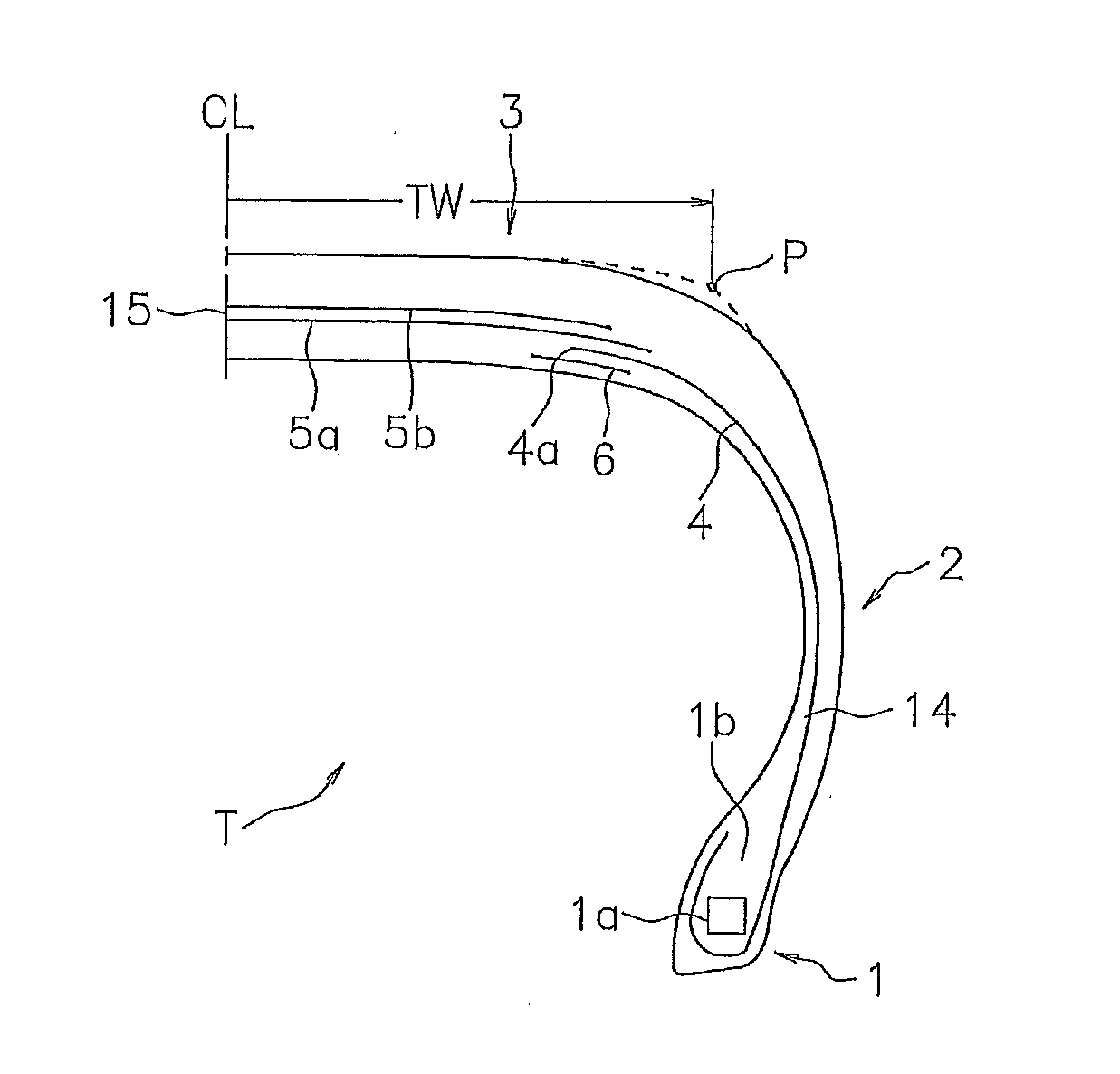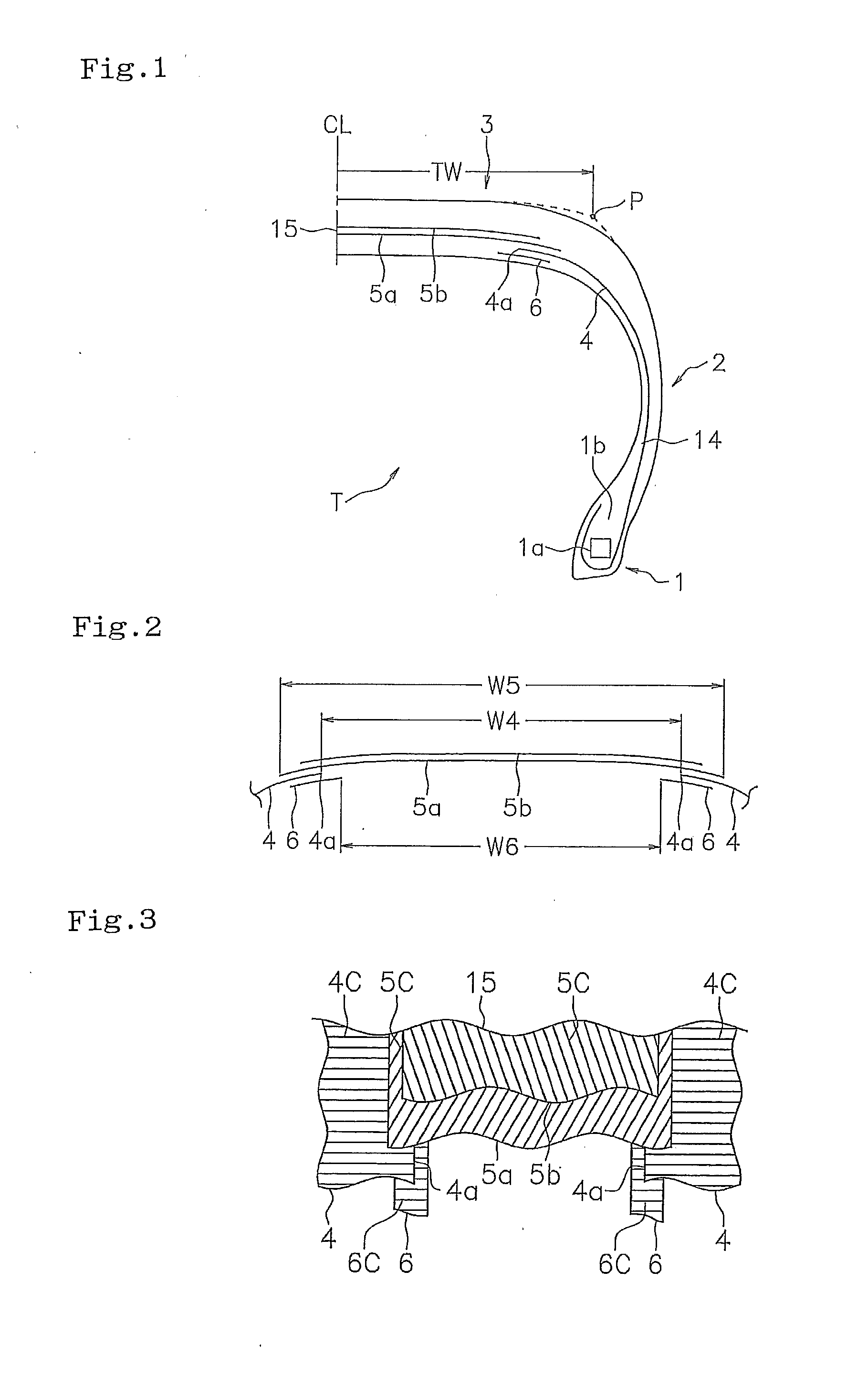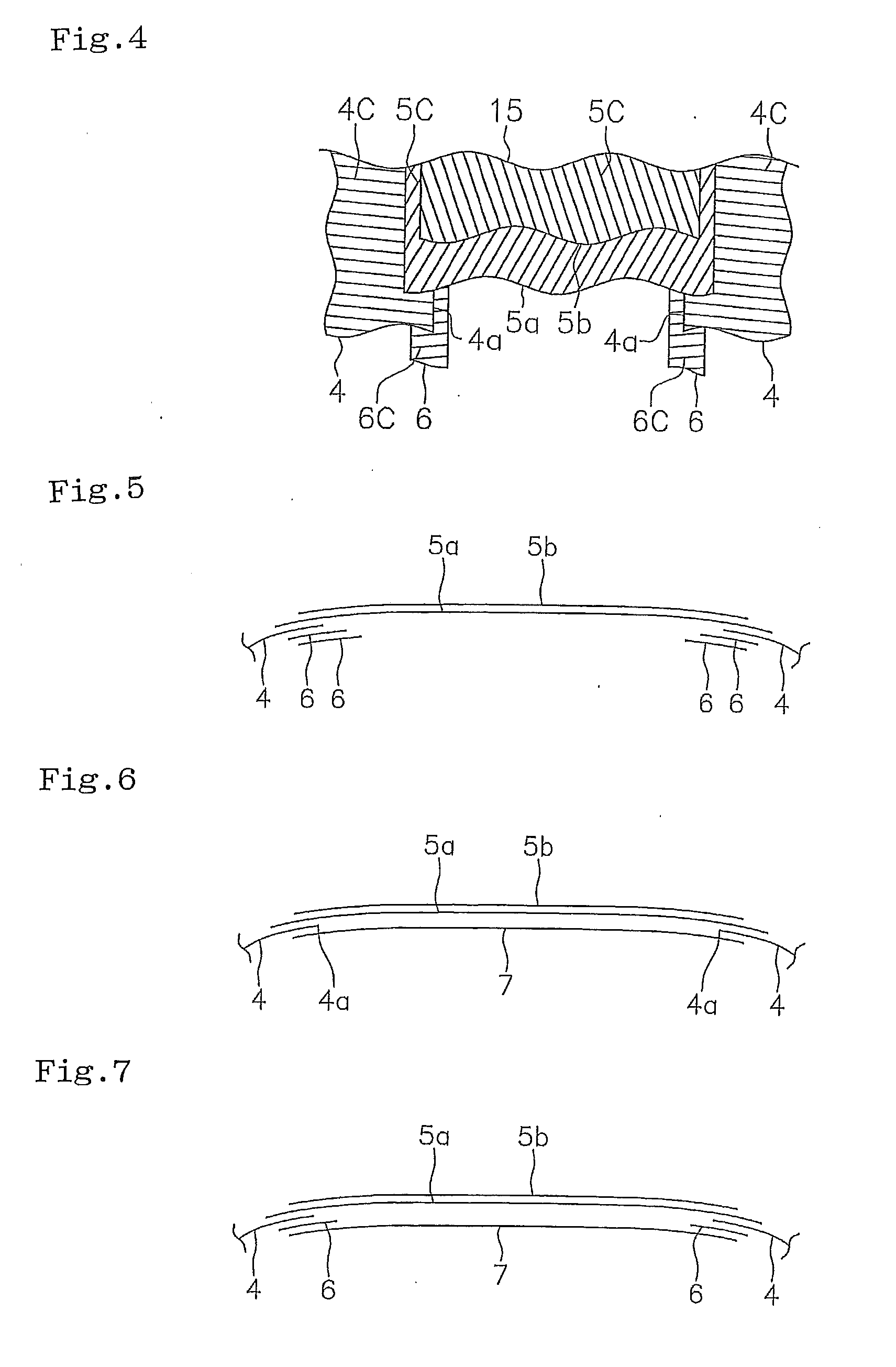Pneumatic tire
a technology of pneumatic tires and cross-sectional tubes, which is applied in the direction of wheels, vehicle components, transportation and packaging, etc., can solve the problems of insufficient mass difference between shoulder regions and center regions, lack of effect of lowering high-frequency road noise, and insufficient suppression of vibration, so as to reduce high-frequency road noise, suppress vibration in the cross-section, and effectually suppress the effect of vibration
- Summary
- Abstract
- Description
- Claims
- Application Information
AI Technical Summary
Benefits of technology
Problems solved by technology
Method used
Image
Examples
example
[0039]In order to specifically show the structure and the effect of the present invention, noise performance with regard to the high-frequency road noise in the vicinity of 1 kHz was evaluated, which will be described below. In this performance evaluation, a test tire (tire size 225 / 45R17) was installed to a test vehicle (2.5 L FR vehicle, two persons ride) while setting a pneumatic pressure to 220 kPa (front wheel) / 260 kPa (rear wheel) and setting a used rim to 17×8−JJ, and a road noise level (630 to 1.6 kHz) at the time of traveling at a speed 100 km / h on a road noise road of a test course was measured by using a microphone.
Comparative Examples 1 and 2
[0040]In the tire structure in FIG. 1, Comparative Example 1 was set to a structure in which the carcass ply was not divided, but was connected at the tread portion and the auxiliary ply was not provided. Further, in the tire structure in FIG. 1, Comparative Example 2 was set to a structure in which the ply was arranged as shown in ...
examples 1 to 3
[0041]In the tire structure in FIG. 1, Example 1 was set to a structure in which the ply was arranged as shown in FIG. 2, Example 2 was set to a structure in which the ply was arranged as shown in FIG. 6, and Example 3 was set to a structure in which the ply was arranged as shown in FIG. 5. Results of the evaluation are shown in Table 1.
TABLE 1ComparativeComparativeExample 1Example 2Example 1Example 2Example 3Carcass plyDivisionAbsencePresencePresencePresencePresenceThickness (mm) 1.1 1.1 1.1 1.1 1.1Auxiliary plyDivision—PresencePresenceAbsencePresenceThickness (mm)— 0.9 0.9 0.9 0.9Angle (*1)—90°0°0°0°Reinforcement cord—PolyesterPolyesterPolyesterPolyesterNumber— 11 1 2ShapeFIG. 2FIG. 6FIG. 5Width W5 (mm)200200200200200Width W4 (mm)—100100100100Width W6 (mm)— 80 80 80 80W4 / W5— 50% 50% 50% 50%W6 / W4— 80% 80% 80% 80%Mass of position (*2)Shoulder100106106106115Center107 99 96102 96Center / shoulder107 93 91 94 83Road noise level (dB)0 (reference) −0.3 −1.2 −0.8 −1.3(*1): ...
PUM
 Login to View More
Login to View More Abstract
Description
Claims
Application Information
 Login to View More
Login to View More - R&D
- Intellectual Property
- Life Sciences
- Materials
- Tech Scout
- Unparalleled Data Quality
- Higher Quality Content
- 60% Fewer Hallucinations
Browse by: Latest US Patents, China's latest patents, Technical Efficacy Thesaurus, Application Domain, Technology Topic, Popular Technical Reports.
© 2025 PatSnap. All rights reserved.Legal|Privacy policy|Modern Slavery Act Transparency Statement|Sitemap|About US| Contact US: help@patsnap.com



